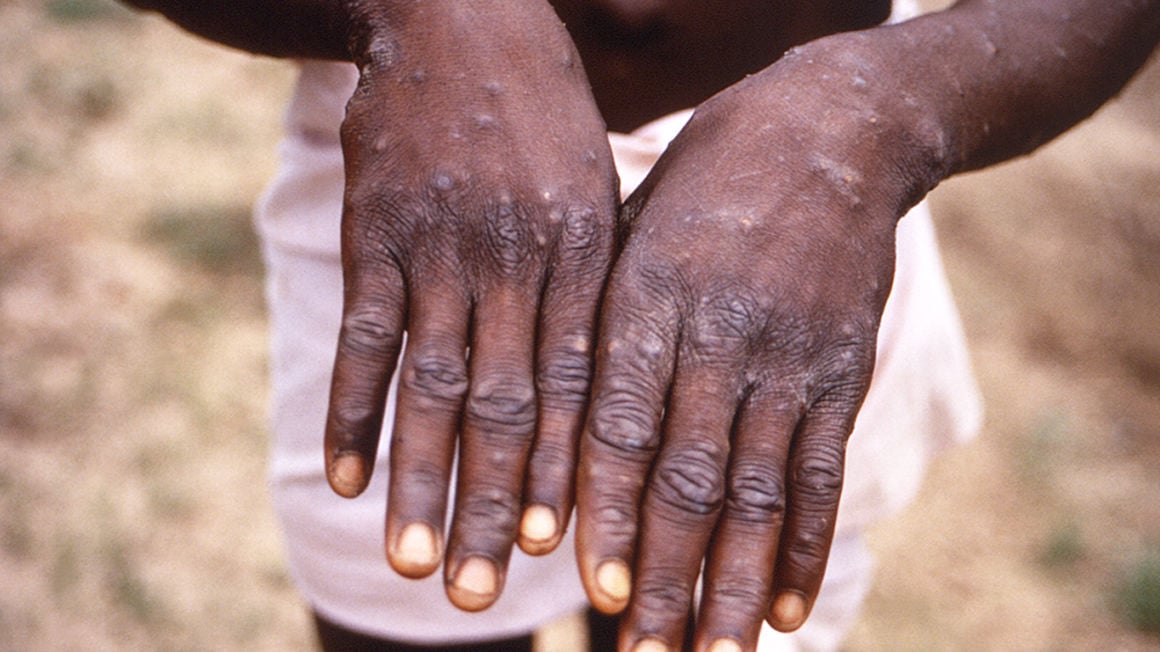[ad_1]

The monkeypox virus, also known as mpox, is undergoing significant evolutionary changes as a result of ongoing transmission among humans, scientists have said.
This evolution is marked by emergence of various lineages characterised by mutations resulting from interactions with the human immune system.
Findings from studies sequencing mpox genome suggest that the virus that has been circulating within the human population since 2016 had diversified into several lineages in humans. This signals capacity for hyper-mutation if left unchecked, and sustained human-to-human transmission rather than zoonosis as the source of new cases.
The authors of the study say their findings challenge the prevailing understanding of mpox as a zoonotic disease and emphasize a need to revise public health messaging, outbreak management, and control strategies related to mpox in light of these sustained human-to-human transmissions.
Read: About 500 people killed by Mpox in DRC since last year
Global epidemic
Traditionally, monkeypox has been considered a disease transmitted to humans through contact with rodents and was believed to be endemic to West and Central Africa.
The first cases of human infection were observed in the 1970s, primarily affecting infants and children. Subsequent cases were often treated as isolated incidents with limited transmission within the human population. However, in 2022, a global epidemic of monkeypox emerged, with cases reported outside of regions known to harbour the virus’s natural reservoirs. This indicated that the infection was not solely a result of zoonotic transmission.
Comparisons of monkeypox virus genome sequences from 2018 and those from the 2022 epidemic revealed a mutation rate higher than expected for double-stranded DNA viruses.
“Most of these mutations were characteristic of changes which are typically associated with the activity of an antiviral enzyme in the human immune system called APOBEC3. This suggests that the virus is undergoing sustained transmission among humans rather than repeated spillover from animals,” said Áine O’Toole and her team from the University of Edinburgh, last week.
“Surveillance needs to be global if MPXV is to be eliminated from the human population and then prevented from reemerging.”
To further investigate this phenomenon, O’Toole and colleagues developed a molecular clock method to track the virus’s evolution. The results confirmed that the globally distributed B.1 lineage of monkeypox in humans exhibited numerous mutations associated with APOBEC3 exposure signaling a shift towards sustained transmission within the human population.
Read: Monkeypox Q&A: An expert explains
Based on an estimated rate of approximately six APOBEC3 mutations per year, O’Toole concluded that the recent clade IIb of the monkeypox virus has been circulating in humans since at least 2016.
Despite the decline of the B.1 lineage worldwide, the investigators stress that the human epidemic from which it originated continues to persist. They argue that global surveillance efforts are necessary to eliminate monkeypox from the human population and prevent its reemergence.
The study highlights the urgency of addressing the evolving nature of the virus and underscores the importance of implementing effective measures to control and eradicate monkeypox.
“Although the B.1 lineage across the world is now diminished – though not yet eradicated – the human epidemic from which it arose continues unabated,” said O’Toole. “Surveillance needs to be global if MPXV is to be eliminated from the human population and then prevented from reemerging.”
[ad_2]
Source link



